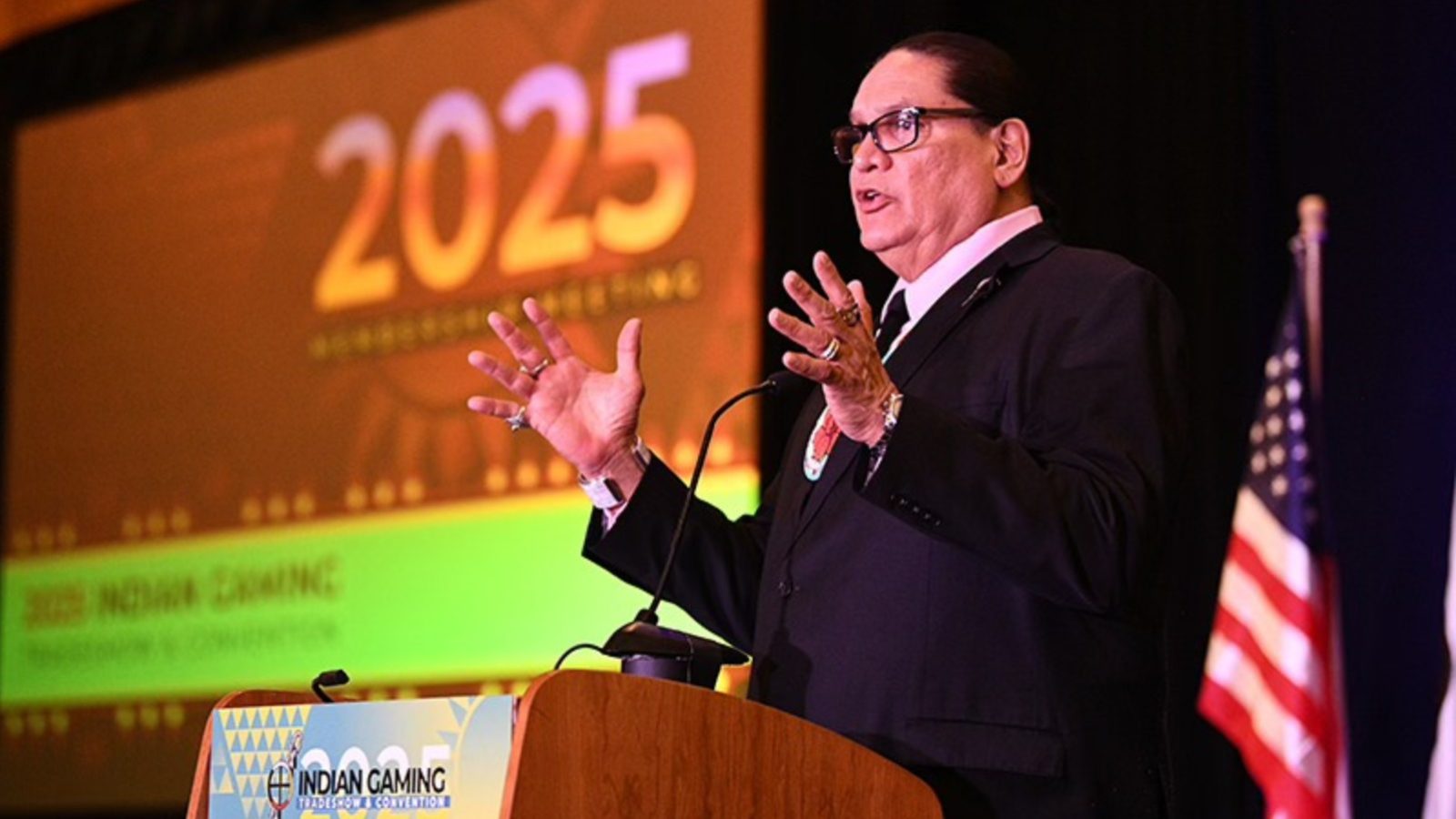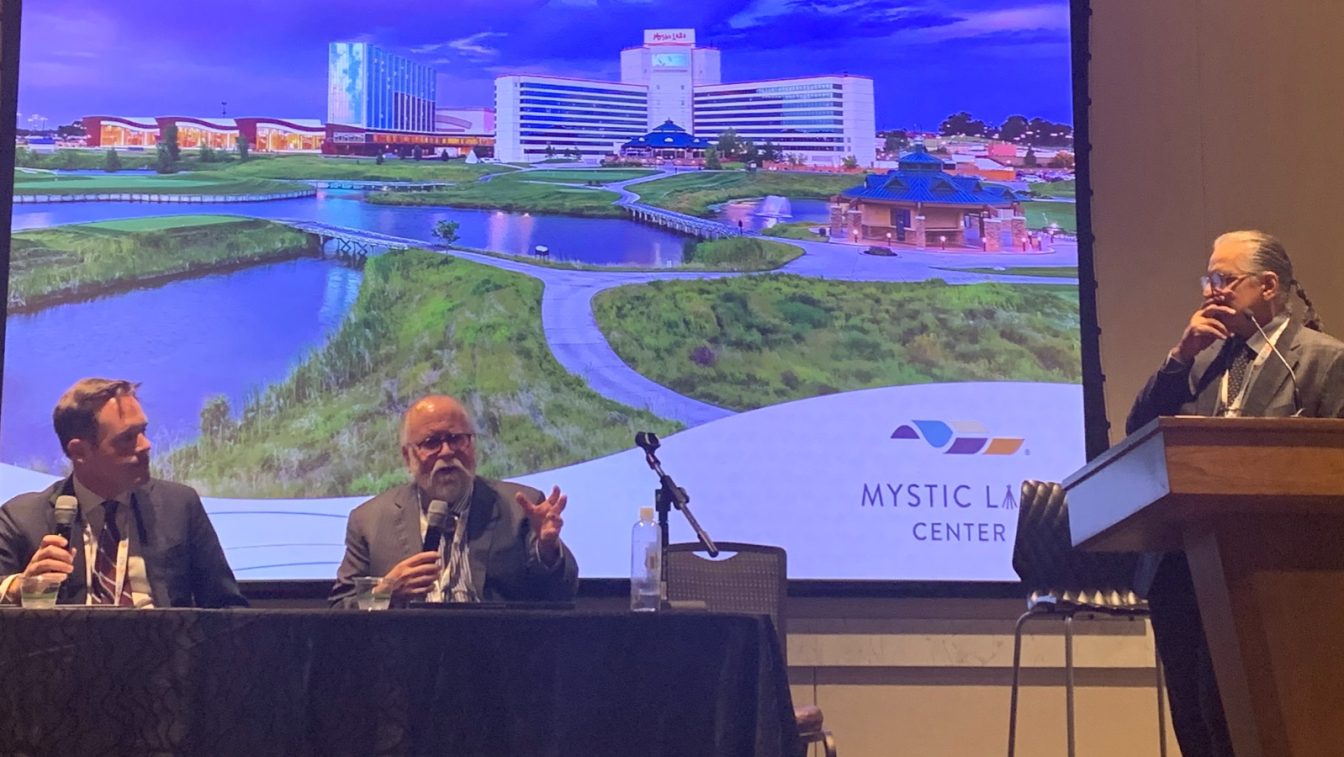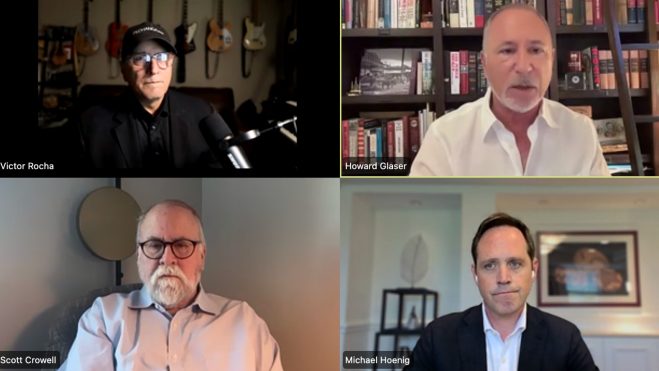Stevens, A ‘Statesman, Diplomat, And Warrior’ Whose Heart Was Always With His Family
Visitation begins Friday at Wisconsin Oneida Nation with service, burial to follow Saturday
4 min

The process of laying to rest Indian Gaming Association (IGA) Chairman Ernest Stevens, Jr. will begin Friday at the Wisconsin Oneida Nation Longhouse, followed by a service and burial at the Oneida Sacred Burial Grounds Cemetery Saturday. Stevens died last Friday, Sept. 26, at the age of 66.
Flags are flying at half-mast on Indian reservations across the U.S., tribal leaders from all over are planning to converge on the Oneida Nation to pay respects, and hundreds of messages from those involved in Indian gaming and Indian affairs who knew Stevens personally and professionally have been posted on social media and sent to the IGA and Stevens’ family.
As part of the process, tribal faith keepers will light a fire to help guide Stevens’ spirit into the next life. His sons said the fire would burn for the traditional 10 days, as they believe that is the length of the journey into the afterlife. As part of the tradition, according to the Oneida Nation, the fire also brings comfort to the family, and on the ninth day that the fire burns, a 10-day feast begins, giving the family the chance to thank the fire keepers and others who have assisted.
The family may also choose to prepare a “spirit plate” that will be set at the head of the table, and then moved outside in the morning to nourish the spirit on its journey.
Wednesday, New Normal webinar hosts Victor Rocha and Jason Giles hosted Stevens’ sons — entrepreneur Ernest III and former Oneida Nation Vice Chairman Brandon Yellowbird Stevens — and Pechanga Band of Luiseno Indians Chairman Mark Macarro in a personal tribute to Stevens.
Brandon shared how his dad always “pushed through” and developed a daily regimen that included reading five newspapers a day so he was prepared. Brandon went on to talk about how his dad would say that the “goal isn’t to win the argument, it’s to provide for a community, and if I let myself get in front of the goal, then that goal won’t happen.”
Born in LA, but reservation was home
Rocha said Stevens wasn’t just a leader, but a friend to all who met him, who spent much of his adult life traveling on behalf of Indian Country.
“It takes a special person to have the type of commitment to your community, and it was 100 percent,” Rocha said. “It wasn’t qualified. He gave it all his heart.”
Stevens grew up in Los Angeles, during what Giles and his sons described as rough time, and a “time that was very influential in the making of this country.” Giles said that experience in Los Angeles in the 1960s and 1970s is what helped Stevens to lead on his own reservation, but it also meant that he had to prove himself when he returned to Wisconsin.
“He wasn’t born on the reservation, but when he came back later, you know what, he absorbed everything, he couldn’t wait to come back,” Rocha said. “That’s where he got his strength. … When he finally did get back, it was such a big deal that he knew where he belonged, and that was on the reservation with his people.”
Said Giles, “I don’t know if folks there held it against him that he wasn’t there from age 0-17 on Oneida, but he definitely gained that initial perspective of how do you keep everyone straight in Indian Country? He had that unique view from across the country, he knew everyone, and he lived it.”
Stevens’ years in Los Angeles were against a backdrop of the Watts Rebellion, ongoing civil rights protests, Robert F. Kennedy’s assassination, and the Manson Family murders. He channeled his energy into the boxing ring, where he won four amateur heavyweight state championships and two amateur heavyweight national championships.
Stevens was a ‘relentless’ advocate
Macarro recounted how Stevens fought for Indian gaming and was able to easily negotiate the line of being “a statesman, being a diplomat, and being a warrior.” Though his home base was in Wisconsin, Stevens spent much time in Washington, D.C. lobbying for and protecting tribal sovereignty, and traveling to reservations across the country.
Macarro went on to explain how Stevens “always had your back,” particularly when Indian gaming began to take hold toward the end of the 20th century. He described Stevens as “relentless” in guiding leaders from Indian Country.
“Those were tough times, Indian gaming was looked down on … which meant that we all, as individual tribes, as individual gaming operations, we knew we had to do things cleaner than the commercial industry, we had to do them better, we had to go the extra mile,” Macarro said. “We had to do more. And Ernie knew that, and he carried that banner on our behalf, as well.”
During Stevens’ 24-year tenure, tribal gaming revenue quadrupled, from $11 billion in 2000 to $43.9 billion in 2024, per the IGA.
Stevens sat on the board for the Center for American Indian Enterprise Development and the Nike7 Foundation and on the executive board of the Center for Native American Youth, and was a member of the Boys and Girls Club of America Native American Advisory Board. Before his run as the head of IGA, Stevens was an elected councilman for the Oneida Nation (1993-99), and was first vice president of the National Congress of American Indians.
Family first
The accolades aside, Stevens’ heart was always at home, with his wife Cheryl, five children, and eventually 20 grandchildren. His sons talked about how he was present for the moments large and small during their childhood.
Stevens stood 6-foot-7 in his trademark cowboy boots, and cut an imposing, athletic figure. His nickname was “Big Cat.” On the inside, however, he was an emotional and loving man. Ernest III recounted a story about a high school football game, when his team lost the final game of his high school career.
“My dad made it to all of our games,” Ernest III said. “Basketball, football, all of the games he was there. He would always sit in the same place … and I was walking off the field, kind of hanging my head, and I looked up and my dad was there walking with me. … I walk out the gate, and he said, ‘Hey, man, you played your best.’
“He hugged me and looked at me, and he was about to cry himself, and that moment, I hadn’t really thought of that until then about how much he was there and how much he cared about us. It was high school sports … and who cares? But I remember that particular moment because he was sad for me. … I just realized that it was different, and I thought, ‘I am going to be like this when I am a dad.'”
While Stevens often appeared to be at any and all events happening on reservations across the country, he led at home, as well, teaching his kids how to succeed, but just as importantly, how to fight a good fight.
“He always had one foot in the old days, needing to know people, and making sure people would feel safe,” Brandon said. “And the community needs to stand up. His passing will leave his mark by making us step up, all of us, to fill his shoes, exactly what he lived. He liked connecting people and sharing stories.”




